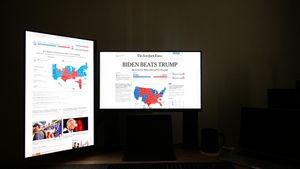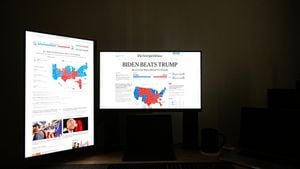Recent weeks have seen intensified military engagement from Israeli forces, leading to significant loss of life across Lebanon, Gaza, and the West Bank. The backdrop of this violence unfurls with deep-rooted political tensions and decades-old conflicts, resulting recently in the deaths of over 100 individuals from these regions. This latest surge of violence follows the backdrop of rising tensions, sparked primarily by the Israeli-Palestinian conflict and heightened by various geopolitical factors.
Israeli airstrikes have particularly focused on areas within Gaza, where the humanitarian situation has already been dire. Reports indicate extensive destruction of infrastructure and civilian casualties. The Israeli government maintains its stance, citing security concerns and the necessity to retaliate against Hamas operations. "We will continue to act as necessary to defend our citizens," stated Israeli Prime Minister Benjamin Netanyahu during recent press conferences, reflecting the sentiment of the government as tensions flared.
Meanwhile, Lebanon has also become embroiled with the re-emergence of hostilities along its southern border with Israel. The Israel Defense Forces (IDF) launched multiple strikes targeting areas they labeled as positions occupied by Hezbollah militants. This follows cross-border tensions where rocket fire originated from Lebanon, prompting swift retaliation. Observers note, this action could indicate Israel's willingness to escalate military operations beyond Gaza and directly confront Hezbollah, which complicates the already fragile dynamics of the Lebanese political scene.
Such military actions have exacerbated the humanitarian crises, particularly in Gaza, where access to basic necessities and emergency aid has been severely hindered. Many humanitarian organizations have raised alarms about the deteriorated living conditions for civilians. They claim hospitals struggle to cope, medical supplies are dwindling, and civilians lack safe passage for evacuations. Notably, organizations like the United Nations Relief and Works Agency for Palestine Refugees in the Near East (UNRWA) have called for immediate ceasefire actions from both parties to allow humanitarian aid to reach those affected.
On the ground, the Palestinian community is facing unprecedented levels of despair. Eyewitness accounts detail harrowing experiences as families dig through rubble seeking loved ones buried beneath the debris. Emergency services report overwhelming demands and limited capabilities to respond effectively to the continuous barrage of fire. The Director of Palestine's Health Ministry, Mai al-Kaila, shared, "Every day we face the loss of precious lives, and every strike brings more grief. We need immediate support, not just words of sympathy," capturing the reality faced by countless families impacted by the strikes.
With the death toll rising, international reactions have poured in, with different countries calling for de-escalation or expressing concern over potential war crimes. The European Union has urged both parties to return to negotiations and respect humanitarian law, calling the actions on the ground deeply alarming. Vatican City has also voiced concerns, with Pope Francis calling for investigations of what he termed the 'genocide' happening against Palestinians, starkly criticizing the use of military actions against civilians.
The United States has also weighed in, emphasizing its commitment to Israel's right to defend itself but simultaneously encouraging restraint and protection of civilian lives. "The need for security is clear, but so is the need for peace," stated U.S. Secretary of State Antony Blinken, highlighting the dual narrative the U.S. has often found itself walking. The balancing act manifests as U.S. officials engage diplomatically with both Israeli and Palestinian leaders, seeking viable paths toward lowering tensions.
This situation, rife with complexity, symbolizes the intertwining grievances and histories between Israelis and Palestinians. Observers mark this moment as yet another turning point, prompting discussions about the future of peace efforts or whether political leadership on both sides is ready to reconsider their strategies. Notably, prominent peace advocates insist on the necessity for grassroots engagement, asserting change cannot emerge only from political machinations but must also resonate authentically with citizenry aspirations. The Carter Center, well known for its efforts toward peace, has begun resuming dialogues advocating for peace negotiations, pushing for increased involvement from neutral international bodies.
Time will tell how the current operations and spiraling violence influence broader Middle Eastern geopolitics and the immediate future for the Palestinian people trapped amid conflicts. The international gaze remains glued to the developments, with fears growing of wider regional repercussions should hostilities not diminish.
Overall, this tumultuous chapter reflects the need for sincere and sustained efforts to address underlying issues, creating pathways toward peace rather than prolonged cycles of violence. Most critically, as the casualties mount and humanitarian needs rise, the call for peace and reconciliation resonates louder than ever before.



